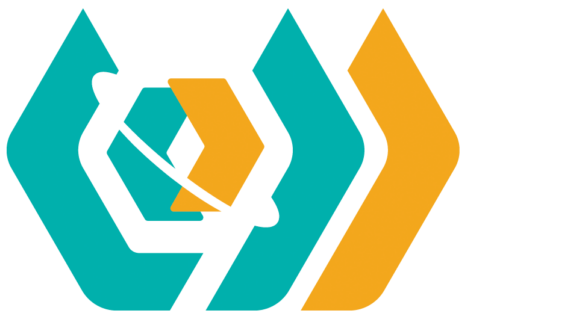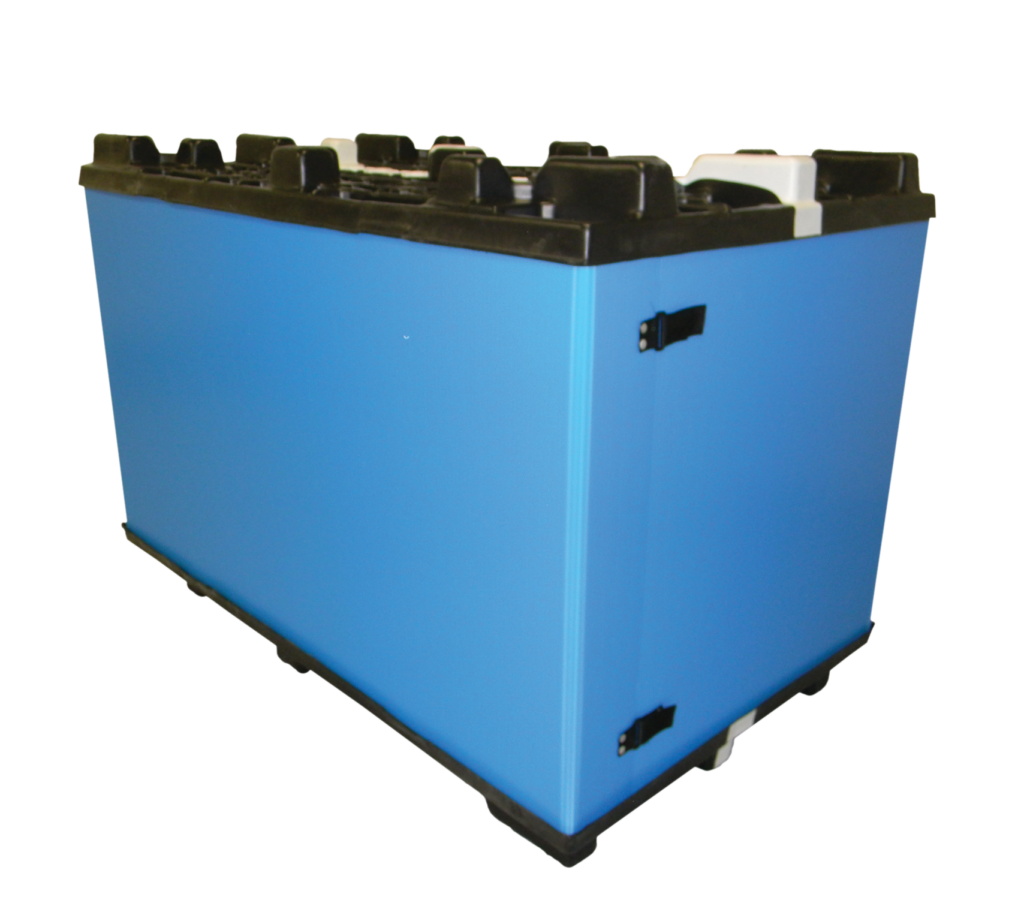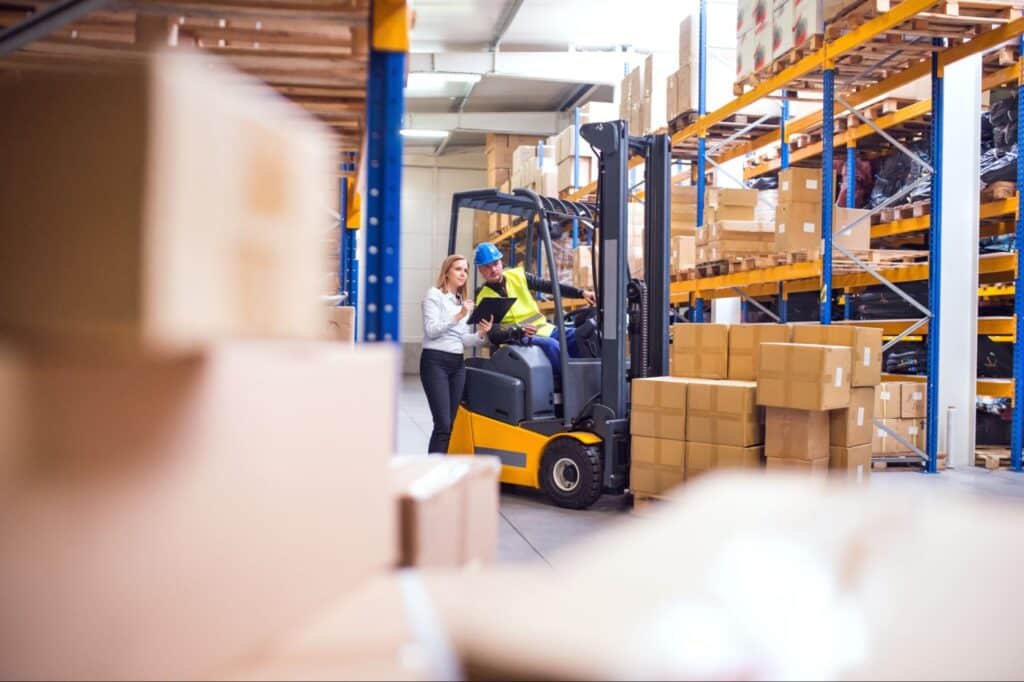Choosing an ideal third-party logistics (3PL) provider can transform your supply chain operations by improving efficiency, reducing costs, and boosting customer satisfaction. The right 3PL partner aligns with your business goals, navigates logistical complexities, and enables sustainable growth. In this guide, we’ll examine the critical factors that define successful 3PL partnerships—from service capabilities and regulatory compliance to technological infrastructure and pricing transparency. We will also discuss how strategic packaging solutions fit into this framework to safeguard your shipments and streamline material handling.
The Strategic Imperative of a 3PL Partnership
In today’s fast-paced business environment, partnering with a robust 3PL is a strategic imperative that can revolutionize your supply chain, fuel long-term growth, and embed resilience into every stage of your operations. From improving day-to-day tasks to unlocking global reach, a 3PL serves as a powerful asset.
Streamline Operations and Drive Cost-Efficiency
A qualified 3PL provider takes over critical functions like inventory storage, order fulfillment, and shipping, consolidating them into a single, cohesive process. By centralizing logistics, your teams can devote more time to innovation and customer relations. This approach also supports more predictable budgeting by replacing large, fixed infrastructure costs with variable operational expenses. Moreover, 3PLs leverage volume discounts on freight and material handling, passing those savings on to your bottom line. The Council of Supply Chain Management Professionals highlights that such streamlined logistics yield not only reduced operational overhead but also greater customer satisfaction.
Unlock Advanced Technology and Data Insights
Partnering with a 3PL grants you access to sophisticated systems—like automated inventory management, demand forecasting, and real-time order tracking—without the large capital investment. These advanced platforms can integrate seamlessly with your existing Enterprise Resource Planning (ERP) or order management systems, ensuring smooth data exchange. This end-to-end visibility allows for swifter decisions, minimizes disruptions, and enables data-driven trend analysis to improve seasonal planning and shipping schedules.
Expand Your Geographic Footprint
Many 3PLs operate sprawling networks of distribution centers and warehouses strategically located near major trade hubs and consumer populations. Leveraging this established network allows you to position inventory closer to end customers, which significantly reduces delivery times and shipping costs. Instead of building or leasing multiple warehouses yourself, you can conserve capital and accelerate your ability to enter new markets, knowing that logistical support is readily available.
Enhance the Customer Experience
Customer satisfaction hinges on reliable and precise order fulfillment. A seasoned 3PL ensures products are picked, packed, and delivered accurately and promptly. This consistency fosters brand loyalty, especially in sectors where timeliness is vital. By maintaining high on-time delivery and order accuracy rates, a 3PL not only enhances the customer experience but also reduces the costs associated with returns and complaints.
Refocus on Your Core Business
Outsourcing logistics allows your organization to refocus on its core competencies, such as product development, marketing, and technology innovation—the elements that distinguish you in competitive markets. By entrusting daily transportation, documentation, and warehousing complexities to specialists, you free up precious internal resources and empower your teams to concentrate on driving growth and refining your value proposition.
Achieve Flexibility and Scalability
As businesses face evolving market conditions and fluctuating consumer demand, a 3PL can rapidly scale services—such as increasing warehouse space or adding new shipping lanes—to adapt. This flexibility allows you to tap into a broad range of capabilities without incurring the significant overhead of building and maintaining your own facilities. Furthermore, as supply chains become more global, an experienced 3PL ensures your products move seamlessly across borders, efficiently clearing customs and adhering to all regional and international regulations, reducing the risk of costly delays.
Types of 3PL Services to Consider
The 3PL landscape consists of providers offering a spectrum of services, each catering to different logistical demands. Identifying which services align with your company’s needs is a cornerstone of effective 3PL evaluation criteria.
Core Logistics Services
Core services include warehousing, order fulfillment, and distribution. Providers focusing on these essentials typically handle large volumes swiftly and accurately, ensuring timely deliveries. For companies requiring straightforward pick-and-pack operations or standardized shipping, these services may be all that’s needed for a consistent supply chain flow.
Specialized Product Handling
Some 3PLs have expertise in moving sensitive or complex goods, such as fragile electronics, medical devices, or large automotive components. These providers often follow specific guidelines for packaging, shipping temperature-sensitive products, and complying with strict industry regulations. Partnering with a 3PL that excels in specialized product handling can make the difference between seamless deliveries and costly setbacks, thereby bolstering your brand’s reputation.
Because packaging and handling are integral to product safety, many businesses turn to solutions that utilize corrugated plastic containers or advanced foam assemblies to safeguard items in transit. Corrugated plastic containers from Universal Package can help minimize damage, protect components, and simplify material handling across diverse industries. For added flexibility, cut & weld containers can be configured to exact dimensions, and foam assemblies ensure proper cushioning when transporting delicate items.
Value-Added Services
Many 3PLs provide value-added services extending beyond typical logistics tasks, such as kitting, custom labeling, and returns management. Incorporating these capabilities can streamline operations by reducing extra handling steps. For instance, having kitting performed at the 3PL’s facility ensures products arrive at your distribution center or end customer fully assembled, labeled, and ready for immediate use.
Moreover, packaging customization—where logos, specific branding elements, or unique inserts are added—can elevate the unboxing experience. This is a subtle yet effective strategy for strengthening brand recall, particularly in consumer-focused industries such as retail or electronics. Using plastic totes can further expedite picking and packing processes, minimizing product damage during handling.
Flexible and Scalable Solutions
As businesses grow or markets shift, scaling logistics becomes crucial. A 3PL that can swiftly expand warehouse capacity or alter distribution channels helps you stay agile. Whether launching new product lines, entering new geographical regions, or experiencing seasonal peaks, flexible 3PL solutions keep operations fluid. Conversely, during slow periods, your 3PL can reduce capacity to align with actual demand, preventing unnecessary overhead. Some providers also offer lease and rental options for packaging products, allowing you to adapt quickly without large capital expenditures.
Transportation and Freight Management
Some 3PLs excel in multi-modal freight management, coordinating ocean, air, rail, and truck transport. A thorough understanding of options like Less Than Truckload (LTL), Full Truckload (FTL), and cross-border logistics ensures you’re not overspending on shipping or dealing with delayed transit times. This expertise is especially beneficial for complex domestic or international routes that must balance cost, speed, and regulatory compliance.
Aligning Your Business Goals with a 3PL Partner

A successful 3PL relationship is about more than daily logistics. It should complement and reinforce your overall business strategy.
Define Key Objectives
Start by identifying the primary reasons you’re seeking a 3PL. Are you looking to scale globally and need more distribution centers? Or perhaps you’re battling rising shipping costs and need better freight optimization? Maybe you’re launching a new product line requiring unique packaging solutions. Pinpointing these objectives helps you compare providers on relevant criteria.
Evaluate Service Compatibility
Not all 3PLs specialize in the same verticals or services. For instance, if your products require custom foam inserts or steel racks, you’ll want a provider who can handle precise packaging specifications. Reviewing service catalogs ensures alignment with your operational demands.
Strengthen Brand Synergy
Your 3PL should act as an extension of your brand. Timely deliveries, correct orders, and professional handling of products collectively shape your customers’ perceptions. Additionally, if you emphasize environmentally conscious practices, a 3PL that shares similar values can help you maintain consistent brand messaging and customer trust.
Foster Long-Term Collaboration
It’s wise to view your 3PL partnership as a shared journey. Remain open to regular performance reviews, encourage feedback, and jointly set benchmarks for improvement. A provider invested in your success will be proactive, suggesting ways to refine processes, adopt new technology, or implement packaging innovations like nesting totes or sleeve packs.
Your Step-by-Step Guide to Evaluating and Selecting a 3PL Partner
A successful partnership begins with a clear understanding of your own operational needs. Document your current pain points and logistical goals, then use this guide to build a shortlist of providers and evaluate them methodically.
- Evaluate Industry Experience: Ensure the 3PL has proven success in your specific industry. They must understand your unique regulatory and handling needs and provide relevant case studies or testimonials.
- Verify Certifications and Compliance: Confirm the provider holds critical certifications for your sector (e.g., ISO, FDA cGMP) to ensure quality standards and protect you from compliance risks.
- Assess Technology and Integration: Their technology must offer real-time visibility and integrate seamlessly with your ERP or order management systems for accurate, synchronized data.
- Analyze Geographic Reach: Check that their facilities are strategically located to serve your key markets, reducing transit times and costs. Assess their international logistics experience if you plan to expand globally.
- Demand Pricing Transparency: Request a clear, itemized quote with no hidden fees. A transparent pricing model for all services is crucial for predictable budgeting.
- Confirm Scalability and Customization: Choose a partner that can scale with your business through seasonal peaks and growth, and who can customize solutions for any specialized needs.
- Review Communication and Support: Look for a clear communication plan, a dedicated account manager, and a defined process for resolving issues quickly and efficiently.
- Scrutinize Performance Metrics: Ask for their key performance indicators (KPIs), such as on-time delivery and order accuracy rates, to gauge their commitment to measurable success.
- Consider Sustainability Practices: If sustainability is a core value, inquire about their eco-friendly initiatives, like route optimization or reusable packaging programs.
- Request and Review Proposals: Obtain detailed proposals and compare their services, technology, and pricing side-by-side to find the best fit for your goals and budget.
- Test with a Pilot Program: Before signing a long-term contract, run a small-scale pilot program to test their real-world performance, accuracy, and communication.
- Verify References: Speak directly with their current or former clients to get honest feedback on their reliability, problem-solving skills, and overall performance.
- Negotiate and Finalize the Contract: Establish a detailed service-level agreement (SLA) that clearly defines performance expectations, reporting requirements, and all associated costs.
- Implement and Onboard: Coordinate a smooth onboarding process covering system integration, staff training, and a schedule for regular performance check-ins to start the partnership strong.
Maximizing the Value of Your 3PL Partnership

Selecting a 3PL is just the beginning. Ensuring that this partnership evolves to meet fluctuating business demands is the true determinant of long-term success.
Foster Clear Communication
Frequent updates, scheduled performance reviews, and a clear escalation protocol foster transparency. Whether it’s a new product launch, an unexpected spike in orders, or a global shipping disruption, prompt information exchange can keep your logistics operations stable and on track.
Ensure System Integration
Aligning your order management or ERP system with your 3PL’s platforms enables real-time data sharing throughout picking, packing, and shipping processes. This reduces human error, ensures you have accurate stock counts, and highlights potential bottlenecks before they evolve into crises.
Collaborate for Continuous Improvement
A proactive 3PL partner won’t wait for you to point out inefficiencies. They’ll use historical data and performance analytics to suggest ways to optimize packaging, shorten transit routes, or revise reorder thresholds. By viewing the 3PL as a strategic ally rather than a mere service vendor, you open the door to solutions that refine how your products move from point A to point B.
Leverage Tailored Packaging Solutions
Packaging is more than just a container—it’s a crucial aspect of product safety, brand image, and cost management. Fragile or high-value products can require specialized dunnage or foam assemblies to reduce damage risk. Streamlined container solutions can speed up loading and unloading, saving time and labor. In fact, working with experts to develop custom packaging solutions can significantly boost material handling efficiency, reduce product damage, and help cut freight costs.
In multi-use scenarios, consider reusable containers, totes, and pallets. Eco-friendly packaging approaches can drive down long-term expenses by reducing waste, supporting sustainability initiatives, and simplifying reverse logistics. Moreover, selecting the right packaging can simplify the kitting process, making assembly lines more efficient and lowering error rates.
Ultimately, aligning packaging strategies with your 3PL workflow ensures products are not only delivered safely but also in a manner that supports broader supply chain optimization.
Building a Resilient Future with Strategic 3PL Partnerships
Strategically choosing a 3PL provider goes beyond simply transferring logistics tasks. It’s about cultivating a partnership that aligns with your objectives, remains responsive to market changes, and supports brand growth. From outlining clear goals and assessing service compatibility to integrating packaging innovations, each step in the 3PL evaluation process strengthens your supply chain’s resilience and efficiency.
If you’re ready to enhance logistics performance with a partner who understands secure, efficient packaging, contact Universal Package to learn how their comprehensive products, custom design services, and reusable solutions can boost your 3PL integration. By leveraging expertise in industrial packaging and material handling, Universal Package can help you protect margins, advance sustainability initiatives, and secure a competitive edge.





